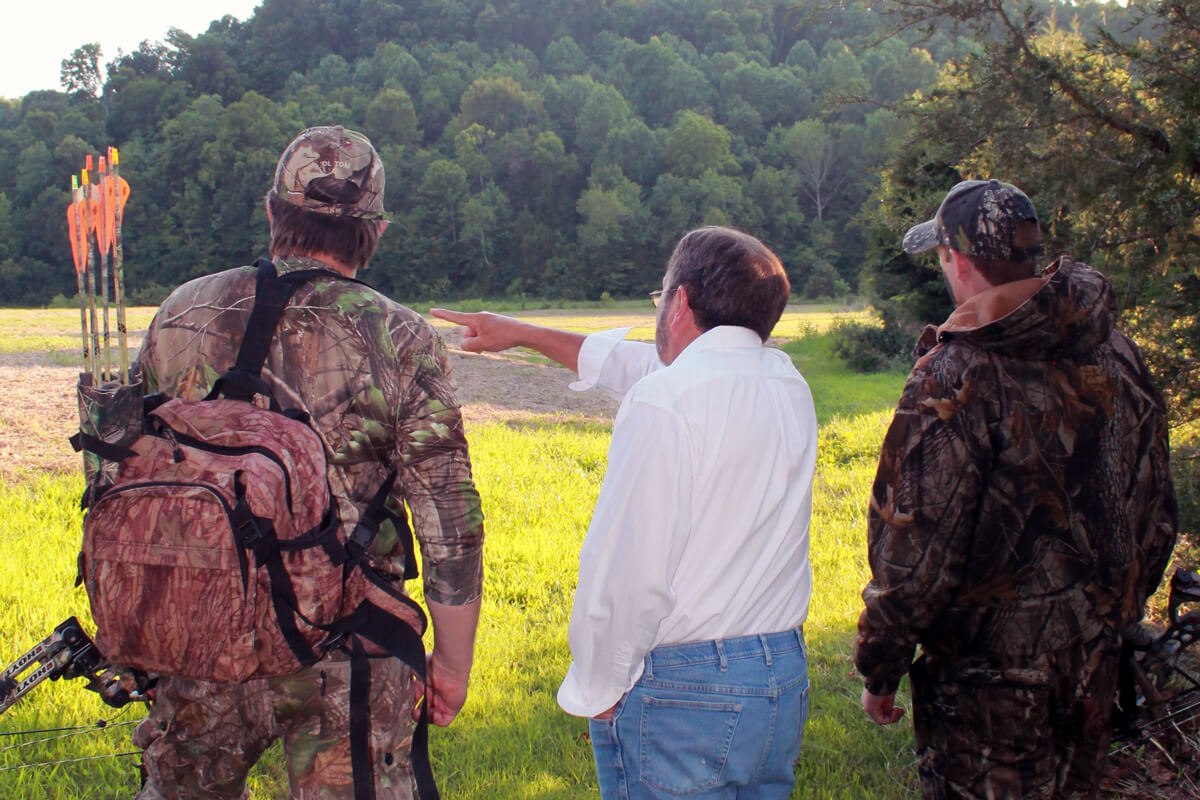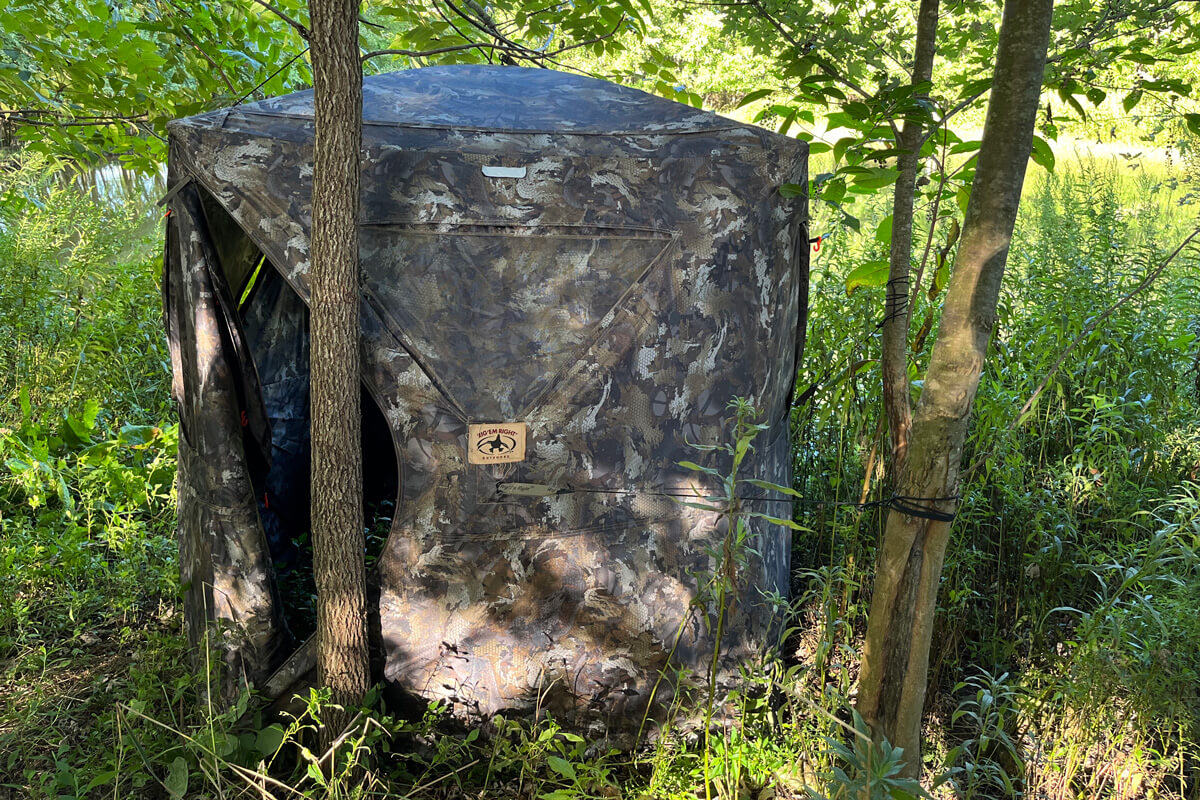
Missing and wounding deer isn’t fun. Practice aplenty and try to avoid each of the 15 primary reasons that hunters miss or wound deer. You can also check with landowners. Sometimes, they might have information on a deer you missed or wounded. (Honeycutt Creative photos)
A hunter draws back, settles the pin, but sends the arrow over the buck’s back. Perhaps he jumped the string? Another hunter does the same, but this time the arrow sinks underneath the belly. Chances are, you’ve missed a deer before, too. And if you haven’t, I hate to burst this delusion, but you certainly will if you hunt long enough.
So, what if you miss with that first arrow? Sometimes you get a follow-up shot. Other times you don’t. Here are next steps for either outcomes.
Reasons Hunters Miss a Buck
Hunters miss deer every season. In fact, I’d like to know the miss-to-hit and wounded-to-dead ratios, but we’ll never get an accurate bead on that. Still, these mishaps happen — a lot. There are many reasons why, including the following:
- Rushing the shot process.
- The deer was too far.
- The deer was too close.
- The pins or crosshairs weren’t visible.
- Using the wrong pin or crosshair hold.
- Ignoring the fundamentals.
- Using poor shooting mechanics.
- Equipment malfunctioned.
- The vitals were obscured.
- The angle wasn’t good.
- A limb or other obstacle got in the way.
- The deer was moving.
- The deer jumped the string.
- Buck fever struck again.
Regardless of which reason occurs, it shouldn’t. All of these are common excuses for missing deer, but none of these should happen. It’s crucial to take the necessary steps to overcome each one. Still, even the best hunters miss and wound deer. So, here’s what to do when it happens.
If You Miss and Get a Follow-Up Shot
Hunters oftentimes think it’s over if you miss a deer. That isn’t true. Second shot opportunities are more common than you might think. If you miss a buck, and it presents another opportunity — be it 10 seconds later or 30 minutes later — you have to be ready for it.
If it happens quickly, carefully nock another arrow, draw back, settle the pin, and let it fly. It’s good to keep your quiver within easy reach. Or pull a backup arrow out and place it somewhere that’s quickly and safely accessible.
If You Miss and Don’t Get a Follow-Up Shot
Get down and check for blood. Sometimes, it can be a hit and you don’t realize it. Once a clean miss is determined, keep hunting. Sometimes, the deer might return. Whitetails are curious animals. It might just give you another chance the same day. And the odds of getting another shot in the days to come are possible, too. Furthermore, you might see another deer you’re interested in.
If You Wound and Get a Follow-Up Shot
Always try to take a follow-up shot on wounded deer. Even if the first shot was perfect, and the deer is certain to die, take another shot if you get the chance. Doing so will likely expire the deer even sooner and makes the hunt that much more humane. Of course, if the shot was bad, taking a follow-up opportunity can mean the difference in killing it or not, and recovering it or not.
If You Wound and Don’t Get a Follow-Up Shot
The trickiest scenario is if you wound a buck and don’t get a follow-up shot. That’s when things get more difficult.
- With a liver hit, wait five to six hours before attempting to recover the deer.
- With a paunch (gut) shot, give the deer 10-12 hours, if conditions allow.
- Shoulder shots are tricky and may or may not be a mortal wound. If not likely mortal, blood trail immediately in hopes of getting another shot. If it is likely mortal, give the deer a few hours.
- Ham hits produce one of two outcomes. Either the buck bleeds out very quickly, or it lives to tell the tale. Either way, begin the blood trail immediately in hopes of another shot opportunity.
- Leg hits are not immediately mortal but tend to set up infection over time. Blood trail immediately in hopes of catching up to the deer for another shot opportunity.
- Spine shots aren’t usually lethal on their own. Go to the deer and finish it with another shot.
There are other bad shots hunters can make, but the above are the most common. Nonetheless, exhaust all options to recover wounded game. Oftentimes, where legal, that might even require hiring a blood-trailing dog, or even recruiting other people to help grid search for the deer.
Beat Buck Fever
It’s always best to make the first shot count. Do that, and you don’t have to worry about missing. But buck fever, and other common causes of missing, are difficult to overcome. Of course, you never want to “cure” buck fever. If that goes away, you’ve lost the excitement for hunting. But it is necessary to manage buck fever. Do that, and you keep the excitement and overcome the challenges it can present. To manage it, do the following things:
- Follow a practice regimen. This helps to get you ready for the real deal. Consider shooting at 3D big buck targets and do other things that simulate real big buck encounters.
- Hunt small game. Making good shots on live critters will help boost confidence once it’s time to make the shot on a big deer.
- Don’t hold your breath. This limits the oxygen in your system. Breathe before, throughout, and after the shot process. This will help lead to a better shot.
- Quit looking at the rack. Distract yourself if the sight of the buck is too much. Rather than staring at the deer, observe it through squinted eyes until time to shoot. Better yet, stare at the spot you’re going to aim at when shooting.
- Envision yourself making a great shot. Visualize it in your mind. That will help lead to a good hit.
- Be aware. See everything around you. Avoid hitting limbs and other things in the way.
- Pick a small spot to aim at. Rather than aiming “behind the shoulder,” consider aiming at a specific hair in the crease behind the shoulder.
- Follow your shot regimen. You’ve been practicing it for a reason. Use proper mechanics and follow through.
- Gain experience. There’s no better teacher, and no better way to overcome buck fever. Keep after it, and you’ll eventually find the success you’re looking for.

Overall, it’s important to accept a missed or wounded deer. It happened. Spend a few hours drowning in your misery, and then move on. Those who continue to sulk don’t improve. They wither. Instead, learn from mistakes, make necessary adjustments, improve as a bowhunter, and continue to do your thing.
Common Q&As
There are numerous questions that surround the topic of missed and wounded bucks. These are the answers to some of those questions.
Q: Does a deer’s body language help to determine the shot location?
A: Yes, it certainly can. Studying how a deer responded can indicate where the broadhead or bullet struck the arrow. For example, a deer that runs a short distance, then stops, and hunches up, oftentimes is hit in the paunch region. In contrast, a heart-shot deer usually mule kicks and runs very hard.
Q: How long do you wait before searching for a deer?
A: This varies based on the shot location. If you don’t see the deer fall, wait the appropriate timeframe. Heart-shot deer can be blood trailed within 30 minutes, double-lung-shot deer within an hour, liver-hit within 5-6 hours, paunch-shot (gut-shot) within 12 hours, etc.
Q: Will a non-mortally-wounded deer come back to the area it was shot in?
A: It might or might not. Some deer do return, although it might take a few minutes, hours, days, weeks, or months to do so. Other deer never return at all.
Q: Should I notch my tag on a lost deer?
A: This depends on legalities. Some states and situations require this, but most do not require it. In the instance that it isn’t required, this is a matter of personal ethics.
Q: How do I get over missing a big buck?
A: Continue hunting. Get back out there. But practice and prepare more than you ever have before. Generally, we create our own luck by setting ourselves up for success or failure.










